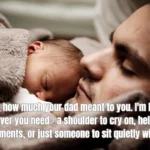Ever received a text with “boba” and wondered if your friend was craving bubble tea or using some mysterious slang? You’re not alone in this digital confusion.
Understanding boba’s multiple meanings transforms you from puzzled recipient to savvy communicator who truly gets modern text culture.
What Does Boba Actually Mean? Breaking Down the Basics
Boba operates as a linguistic chameleon, shifting meanings based on context and generation. Originally referring to those chewy tapioca pearls floating in your favorite bubble tea, this term has evolved into multifaceted slang that carries emotional weight in digital conversations.
The word stems from Taiwanese culture, where “boba” describes the marble-sized tapioca balls that revolutionized tea drinking worldwide. However, modern usage extends far beyond beverage terminology.
In contemporary texting, boba meaning encompasses affection, playfulness, and even physical descriptions. This evolution reflects how food culture infiltrates our language, creating new ways to express intimacy and connection.
The Original Boba Definition You Need to Know First
Traditional boba definition centers around bubble tea culture. These squishy, translucent spheres made from cassava starch create the signature experience of “popping” flavors in your mouth while sipping tea.
Pronounced “BOH-bah,” not “BOB-ah,” this term originated in Taiwan during the 1980s. The name allegedly comes from the slang term for large breasts, referencing the pearls’ size and appearance.
Understanding this foundation proves crucial because many text conversations still reference actual bubble tea. Context clues help distinguish between “Let’s get boba after work” (literal invitation) versus “You’re such a boba” (affectionate teasing).
How Boba Became Internet Slang and What It Really Means in Text Messages
Digital transformation of boba slang happened organically through social media platforms and texting apps. Gen Z and millennials adopted this term as an endearing way to describe someone cute, silly, or lovably awkward.
The transition makes perfect sense when you consider boba’s characteristics: sweet, bouncy, and irresistibly appealing. These qualities translate beautifully into describing personalities and relationships.
Boba in text often signals playful affection. Friends use it to tease each other lovingly, while romantic partners might employ it as a pet name that’s both unique and culturally relevant.
The Hidden Meanings Behind Boba That Most People Don’t Know About
Beyond innocent bubble tea references, boba meaning text sometimes carries more adult connotations. Some communities use this term to describe physical attributes, particularly referencing the original Taiwanese slang that inspired the drink’s name.
However, context remains everything. Most Americans using boba slang stick to wholesome interpretations focused on cuteness and affection rather than physical descriptions.
Understanding these nuanced meanings prevents awkward misunderstandings. When someone calls you “boba,” they’re typically highlighting your adorable or endearing qualities rather than making inappropriate comments.
Real Examples of How Americans Use Boba in Text Conversations Today
Friend-to-friend usage: “OMG you’re such a boba for forgetting your keys again 😂”
Romantic context: “Good morning my little boba ❤️”
Social media captions: “Boba vibes with my bestie #bubbletealife”
Descriptive usage: “She has this boba energy that makes everyone smile”
These examples demonstrate boba’s versatility in American digital communication. Notice how tone and emoji usage provide additional context clues for interpretation.
Boba vs Other Popular Text Slang Terms: What Makes It Unique
Unlike generic terms like “bae” or “bestie,” boba carries cultural specificity that reflects America’s growing Asian influence. This term connects food culture with emotional expression in ways that feel fresh and authentic.
Boba vs Bae: While “bae” means “before anyone else,” boba emphasizes playful sweetness without romantic exclusivity.
Boba vs Bestie: “Bestie” declares friendship status, but boba describes personality characteristics and energy.
Boba vs BB: “BB” (baby) focuses on protective affection, while boba highlights quirky, bouncy characteristics.
The Cultural Impact of Boba Slang in American Digital Communication
Boba’s linguistic adoption reflects America’s evolving cultural landscape. As bubble tea shops proliferate across the country, the terminology naturally integrates into everyday vocabulary.
Statistics show bubble tea market growth of 8.9% annually in the United States, directly correlating with increased boba slang usage among younger demographics.
This phenomenon demonstrates how food trends influence language evolution. Just as “spill the tea” transformed gossip conversations, boba terminology reshapes how we express affection and personality descriptions.
Common Mistakes People Make When Using Boba in Text Messages
Overusing the term dilutes its impact. Reserve boba for moments when you want to emphasize someone’s particularly cute or endearing behavior.
Misreading context leads to confusion. Always consider the relationship dynamic and conversation tone before interpreting boba usage.
Generational assumptions create misunderstandings. Older recipients might assume you’re discussing bubble tea when you mean something entirely different.
Wrong pronunciation references in voice messages sound awkward. Remember: “BOH-bah,” not “BOB-ah.”
How to Respond When Someone Uses Boba in a Text Message
Acknowledge the compliment if someone calls you boba affectionately. Simple responses like “aww thanks!” or “you’re the sweetest!” work perfectly.
Ask for clarification when uncertain: “Are we talking bubble tea or are you being cute?” removes ambiguity while maintaining conversational flow.
Match their energy by reciprocating with similar playful language. This builds rapport and shows you understand their communication style.
Don’t overthink it. Most boba usage carries positive intentions, so respond warmly unless context suggests otherwise.
The Future of Boba as Text Slang and What to Expect Next
Boba terminology will likely expand as bubble tea culture deepens its American roots. Expect variations like “bobalicious” or “boba vibes” to gain traction.
Regional differences may emerge, with West Coast usage potentially differing from East Coast interpretations due to varying Asian population densities and cultural exposure.
Cross-platform evolution suggests boba slang will adapt across TikTok, Instagram, and emerging social media platforms, each adding unique contextual flavors.
Key Takeaways: Master the Art of Using Boba in Your Text Conversations
Context determines everything when interpreting or using boba in digital communication. Consider your relationship with the recipient and overall conversation tone.
Cultural awareness enhances your understanding of this term’s evolution from Taiwanese bubble tea culture to American slang expression.
Generational sensitivity matters since different age groups may interpret boba differently based on their cultural exposure and social media habits.
Boba slang represents the beautiful intersection of food culture and digital language evolution. You now possess the knowledge to navigate these sweet, bouncy conversations with confidence and cultural appreciation. Your texting game just leveled up significantly.
More Posts
DPMO Meaning Demystified: Hiatus Definition and Usage Explained
Sybau Meaning (Hiatus Meaning) — What It Stands For, How to Apply It, and 16 Top Alternatives
FTM Meaning: Understanding This Important Acronym and Its Respectful Usage

Welcome to Brightnis! I am the admin and creator of this platform. I love questioning ideas and exploring different situations. My goal is to encourage critical thinking and help people see things from new perspectives. Join me in discussing thought-provoking topics and finding unique solutions to everyday challenges!






